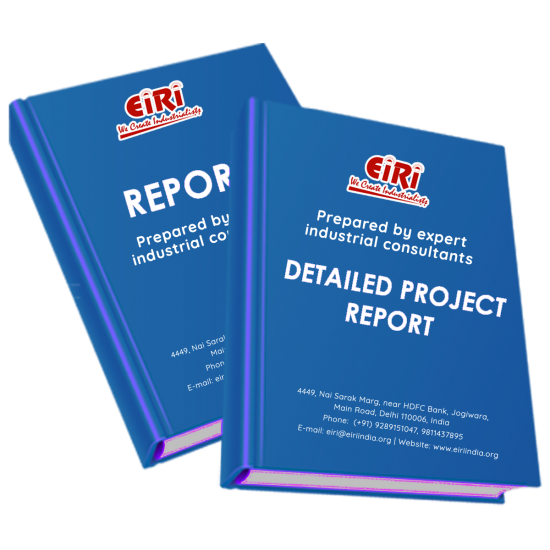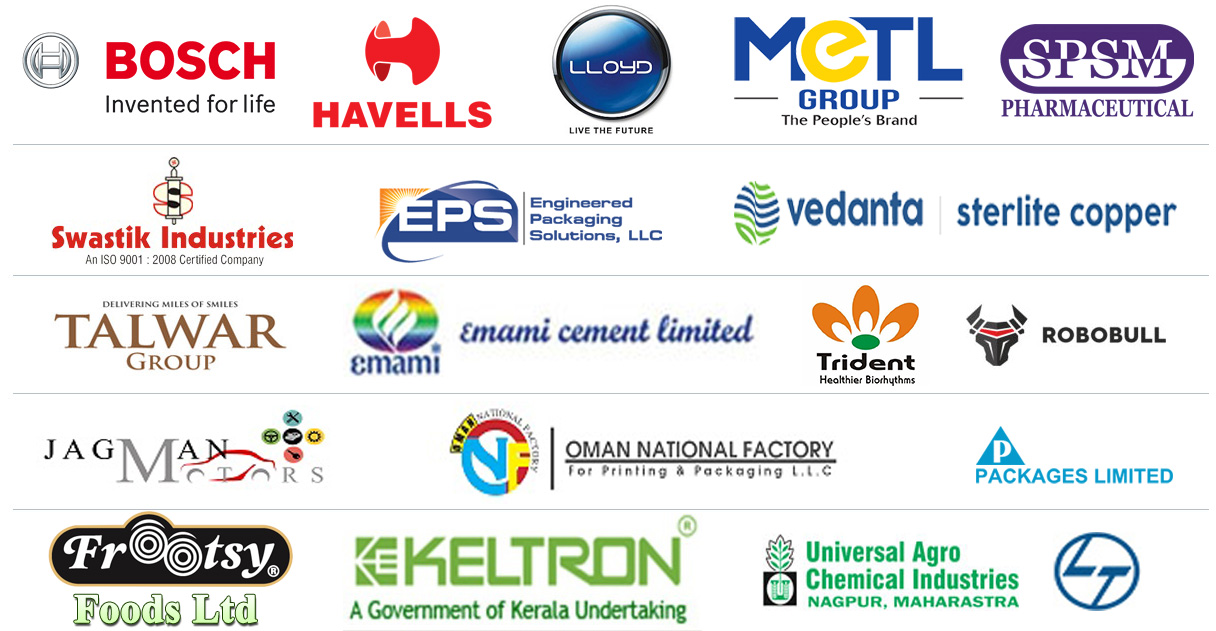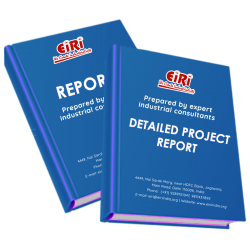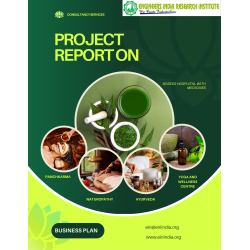Detailed Project Report on herbal extract, essential oils,spices and value addition

- More than 45 years of experience
- Managed by expert industrial consultants
- ISO 9001-2015 Certified
- Registered under MSME, UAM No: DL01E0012000
- 24/5 Research Support
Get your quesries resolved from an industry expert. Ask your queries before report or book purchase. - Custom Research Service
Speak to the our consultant to design an exclusive study to serve your research needs. - Quality Assurance
All reports are prepared by highly qualified consultants & verified by a panel of experts. - Information Security
Your personal & confidential information is safe & secure.
HERBAL EXTRACT, ESSENTIAL OILS, SPICES AND VALUE ADDITION
[CODE NO.3339]
Essential oil also called etheral or volatile oils are volatile odoriferous bodies of an oily character derived mostly form vegetable sources. They occur in small concentrations in special cells, glands or ducts, either in one particular organ of the plant or distributed over many part e.g. leaves, barks, roots, flowers or fruits. Occasionally, they are present in combination with sugars, as glycosides, e.g. amyodalin in bitter almonds and sinigrin in mustard seeds, and are liberated when the glycosides are hydrolyzed. Essential oils are insoluble in water, but freely soluble in alcohol, either, fatty oils and mineral oils.
They are commonly liquid at ordinary temperature and some of them deposit solid matters on standing most of the essential oils are optically active, are lighter than water and possess high refractive index. They are composed of a number of chemical compounds:- Hydrocarbons, Alcohols, Ethers, Aldehydes Ketones, Oxides and lactones etc.
M. Indica is found largely in the greater part of India upto an altitude of 1200 M. Its bark is dark colour and cracked. Its leaves are clustered near the ouds of the branches. It is coriaceous, pubescent when young almost glabrous when mature the flowers of this tree are dense fasciles near ends of branches. They may be small, calyx, corolla tubular and fleshy.
M. Indica is found in mixed deciduous forests, usually of a somewhat dry type, often growing on rocky and sandy soil and turning on the deccan trap. It is common throughout central India, Mumbai and Andhra Pradesh. It is also common in the drier type of sal forests in Madhya Pradesh. It is much planted in the plains of northern India and Deccon peninsula when forest land is cleared for cultivation, mahua trees are carefully preserved.
Essential Oils:-
Products derived from plants in which the odoriferous characteristics are concentrated. Essential oils are also known as "Volatile" and "etheral" oils, in contradistinction to the fixed or glyceride vegetable and animal oils and the mineral oils. Essential oils have been obtained from about eighty-seven plant families, and at times different essential oils can be secured from different parts of the same plant. For instance, the flowers of the orange tree yield oil of neroli, or oil of orange flowers; the rind yields orange oil, and another essential oil is obtained from the leaves.
Classification. The essential oil can be classified in several ways. According to use, essential oils are divided into three broad classes: (1) those used for perfumery, soap, and cosmetics; (2) those used for flavouring foods and beverages; and (3) those used for therapeutic purposes. According to preparation there are five principal groups of essential oils namely, oils obtained (1) by expression, (2) by distillation, (3) by solvent extraction, (4) by counter current extraction, and (5) by enfleurage. According to sources, essential oils are classified by the eighty-seven plant families mentioned above and also by the various parts of the plant which are utilized (e.g. fruits, seeds, buds and flowers, leaves and stems, roots, bark, or wood). Classification according to geographical origin is also common since superior types of essential oils are produced in specific geographical areas that have favourable soil and climatic conditions.
Properties. Essential oils are generally colorless to slightly yellowish when freshly distilled but when foreign matter is present, the color may range from red to blue. On standing the oils generally become darker in color. The odor of essential oils is similar to that of the portion of the plant from which they are derived; but since these odorous characteristics are much more concentrated in the essential oil, the odor is often disagreeable. The terpenes they contain are fairly readily oxidized, resulting in a turpentine odor. The specific gravity of these materials varies from 0.84 to 1.18. They are volatile at room temperature and evaporate completely when heated. Most essential oils are only slightly soluble in water; they are more soluble in sugar solutions.
The principal terpeneless oils and sesquiterpeneless oils are bergamot, grapefruit, lavender, lemon, lime mandarin, orange, orrisroot, peppermint, petitgrain, and spearmint.
COST ESTIMATION
Plant Capacity : HERBAL EXTRACT, ESSENTIAL OILS...
land & Building (2000 Sq.Mtr) : Rs. 1.45 Cr
Plant & Machinery : Rs. 1.78 Cr
Working Capital for 2 Months : Rs. 2.11 Cr
Total Capital Investment : Rs. 5.44 Cr
Rate of Return : 24%
Break Even Point : 57%
1. INTRODUCTION
2. ESSENTIAL OILS
3. THERE ARE A NUMBER OF SPICES USED ALONG WITH FOOD, NAMELY
4. HERBAL EXTRACTS, CLASSIFICATION & POST HARVEST PROCESSING
5. CLASSIFICATION OF EXTRACTS IN TERMS OF THEIR PHYSICAL STATE
6. POST-HARVEST PROCESSING
7. STORAGE
8. GRINDING
9. TYPES OF EXTRACT (HERBAL)
10. STANDARDIZED EXTRACTS
11. QUANTIFIED EXTRACTS
12. OTHER EXTRACTS
13. „PURIFIED“ EXTRACTS
14. DETAILS OF HERBAL EXTRACT
15. CRITICAL PARAMETERS FOR THE MANUFACTURING OF CRITICAL
PARAMETERS FOR THE MANUFACTURING OF (REFINED) EXTRACTS
16. STANDARDIZED HERBAL EXTRACTS
17. HERBAL EXTRACTS (100% WATER SOLUBLE)
18. GUIDANCE ON EQUIVALENCE OF HERBAL EXTRACTS IN COMPLEMENTARY
MEDICINES
19. DEFINITIONS
20. FACTORS THAT IMPACT UPON EQUIVALENCE OF EXTRACTS
21. FACTORS THAT INFLUENCE THE QUANTITY AND SPECTRUM OF
COMPONENTS IN AN EXTRACT
22. FACTORS AFFECTING THE SPECTRUM OF COMPONENTS EXTRACTED
FROM HERBS
23. HERBAL MATERIAL
24. EXTRACTION SOLVENT
25. MANUFACTURING PROCEDURE
26. PERMITTED VARIATION IN FACTORS AFFECTING QUANTITY OF EXTRACT
27. HERBAL MATERIAL
28. EXTRACT SOLVENT
29. TYPE AND AMOUNT OF SOLVENT IN EXTRACT
30. MANUFACTURING PROCESS
31. EXTRACT RATIO
32. MAJOR RAW MATERIALS USED IN EXTRACTION OF ESSENTIAL OIL
33. USES AND APPLICATIONS
34. A. ESSENTIAL OILS FROM FLOWERS
35. B. ESSENTIAL OILS FROM HERBS SPIKENARD OIL (JATAMANSI OIL)
36. C. CINNAMON OIL
37. CINNAMON OIL
38. ZEODOARY OIL
39. USES AND APPLICATIONS OF SPICES
40. GINGER OR ADRAK
41. PEPPER OR 'KALIMIRCH'
42. CHILLIES OR 'LALMIRCH'
43. CARDAMOM OR 'ELAICHI'
44. TURMERIC OR 'HALDI'
45. CLEAVES OR 'LOUNG'
46. CINNAMAS OR 'DALCHISS'
47. CASSIA OR 'TEJPAT'
48. NUTMEG OR 'JAIPHAL'
49. ANISEED
50. BISHOP WEED OR 'AJWAN'
51. ALSPICS
52. ESSENTIAL OILS FROM SPICES
53. PHARAMACOLOGICAL PROPERTIES OF ESSENTIAL OILS
54. ANTISEPTICS:
55. EXPECTORANTS AND DIURETICS:
56. SPASMOLYTIC AND SEDATIVE:
57. OTHERS:
58. CHEMICAL CONSTITUENTS OF ESSENTIAL OILS
59. TERPENES:
60. MONOTERPENES [C10H16 ]
61. B. SESQUITERPENES
62. SESQUITERPENE LACTONES:
63. DITERPENES
64. ALCOHOLS
65. ALDEHYDES:
66. ACIDS
67. ESTERS
68. KETONES:
69. LACTONES
70. PATCHOULI – A MEDICINAL AND AROMATIC PLANT
71. HARVESTING OF PATCHOULI
72. DRYING OF PATCHOULI HERBAGE
73. FEATURES AND APPLICATION OF PATCHOULI OIL
74. APPLICATION OF PATCHOULI
75. PERFUMERY
76. THERAPEUTICS
77. MEDICINE
78. BURNERS AND VAPORIZERS
79. BLENDED MASSAGE OIL OR IN THE BATH
80. NEAT
81. LOTIONS AND CREAMS
82. PROPERTIES OF PATCHOULI OIL
83. ORIGIN OF PATCHOULI OIL
84. CHEMICAL COMPOSITION AND PRECAUTION OF PATCHOULI OIL
85. PRECAUTIONS
86. THERAPEUTIC PROPERTIES
87. USES
88. B.I.S. SPECIFICATION
89. OVERVIEW OF HERBAL MEDICINE IN INDIA
90. LIST OF MEDICINAL PLANTS WHOSE MARKET POTENTIAL IS VERY HIGH
91. MARKET SURVEY OF HERBAL EXTRACT
92. DRIVING FACTORS OF THIS MARKET:
93. CATEGORIZATION OF THE MARKET:
94. KEY COMPANY PLAYERS OF THE INDUSTRY:
95. KEY COUNTRIES DEALING IN THIS MARKET:
96. IMPORT DATA OF HERBAL EXTRACT
97. SPICE OIL MARKET POSITION
98. INDIAN MARKET SHARE OF ESSENTIAL OIL
99. ESSENTIAL OIL MARKET OVERVIEW:
100. GLOBAL MARKET POSITION OF ESSENTIAL OIL
101. PRODUCT INSIGHTS
102. APPLICATION INSIGHTS
103. REGIONAL INSIGHTS
104. COMPETITIVE INSIGHTS
105. MAJOR PRODUCERS OF ESSENTIAL OILS
106. MAJOR CONSUMER OF ESSENTIAL OILS
107. LARGEST GLOBAL MARKET PLACES FOR ESSENTIAL OIL
108. PRESENT MANUFACTURERS/SUPPLIERS/EXPORTERS OF ESSENTIAL OILS
109. MARKET SURVEY OF SPICES
110. EXPORT HIGHLIGHTS AND KEY MARKETS
111. REVIEW OF EXPORT PERFORMANCE OF SPICES DURING 2015-16
112. CHILLI THE MOST EXPORTED SPICE
113. MARGINAL RISE IN PEPPER
114. 5 SPICES ACCOUNT FOR 70%
115. INDIA COMMANDS A FORMIDABLE POSITION IN WORLD SPICE TRADE.
116. WHY INDIA?
117. SPICE PARKS
118. THE SPICE PARKS WHICH ARE UNDER THE AEGIS OF THE SPICES
BOARD ARE:
119. QUALITY MEASURES
120. MEASURES TO BOOST EXPORT OF SPICES
121. 12TH PLAN SCHEMES OF SPICES BOARD
122. MASALA SPICE OF EXPORT
123. DETAILED EXPORT DATA OF SPICES RED CHILLI
124. MANUFACTURING PROCESS OF HERBAL EXTRACT
125. PROCESS FLOW DIAGRAM OF HERBAL EXTRACT
126. SEQUENCES IN HERBAL EXTRACT
127. SORTING & MILLING
128. CONCENTRATION OF EXTRACT
129. DETAILS OF HERBS EXTRACTION PROCESS
130. PREPARATORY WORK
131. PRE-EXTRACTION METHODOLOGY
132. HIGH-PRESSURE LOW-TEMPERATURE EXTRACTION AND GRANULATION
133. PROCESSING STEPS FOR HERBAL EXTRACT
134. STEP 2: HERBAL PREPARATION & FORMULA VERIFICATION
135. STEP 3: EXTRACTION
136. STEP E: COLLECTION AND RESTORATION OF ESSENTIAL OIL
137. STEP 4: HERBAL CONCENTRATION
138. STEP 5: GRANULATION
139. STEP 6: FINISHED PRODUCT QC
140. STEP 7: PACKAGING AND APPEARANCES
141. MANUFACTURING PROCESS FOR EXTRACTION OF ESSENTIAL OILS FROM
FLOWERS, HERBS, SPICES BY SUPER CRITICAL FLUID (CARBON DIOXIDE)
142. A. EXTRACTION OF ESSENTIAL OIL FROM FLOWERS
143. FROM FLOWERS
144. PROCESS FLOW DIAGRAM FOR EXTRACTION OF ESSENTIAL OILS FROM
FLOWERS USING SUPER CRITICAL FLUID METHOD
145. B. FROM HERBS
146. CLEANING
147. WASHING
148. DRYING
149. DISINTEGRATION INTO SMALL CHIP
150. PROCESS FLOW DIAGRAM FOR EXTRACTION OF ESSENTIAL FLUID METHOD
151. FROM SPICES
152. CLEANING
153. DRYING
154. DRYING
155. CUTTING INTO PIECES
156. PROCESS IN DETAILS FOR EXTRACTION OF ESSENTIAL OIL
157. EXTRACTION OF ESSENTIAL OILS USING STEAM DISTILLATION METHOD
158. METHOD OF EXTRACTION OF PATCHOULI OIL
159. STEAM DISTILLATION OF PATCHOULI ESSENTIAL OIL
160. ANALYSIS OF ESSENTIAL OILS
161. CHROMATOGRAPHIC DATA OF EUCALYPTUS OIL
162. EXPERIMENTAL SETUP:
163. DETAILS OF HYPERCRITICAL CARBON DIOXIDE GAS CO2 EXTRACTION
OF ESSENTIAL OILS
164. CO2 HYPERCRITICAL EXTRACTION
165. PROCESS OF MANUFACTURE FOR SPICES
166. KACHHI BRAYANI
167. SOUTH INDIAN CURRY
168. FISH MASALA
169. FISH KABAB MASALA
170. FISH PULAO MASALA
171. POTATO MEAT PURI MASALA
172. MASALA FOR RICE OF FISH
173. PICKLE MASALA (MANGO)
174. THANDAI - POWDER
175. CHAT MASALA
176. FISH - MASALA
177. JAL - JEERA
178. CURRY-POWDER
179. TANDOORI CHICKEN POWDER 165
180. SAMBHAR POWDER
181. GARAM MASALA
182. MUTTON BIRYANI MASALA
183. DISINTEGRATING AND POWDERING
184. ADDITION OF ACTIVITIES AND ITEMS IN FUTURE EXPANSION
185. PLANT LAYOUT
186. SUPPLIERS OF PLANT AND MACHINERIES
187. FOR HERBAL EXTRACT & ESSENTIAL OIL
188. SUPPLIERS OF PLANT AND MACHINERIES FOR SPICES
189. PULVERIZERS
190. LABORATORY TESTING EQUIPMENT
191. HAMMER MILLS
192. FILTER PRESS
193. ROTARY WASHER
194. FLUIDIZED BED DRYER
195. MIXER
196. SIEVING MACHINE
197. WEIGHING MACHINE
198. MATERIAL HANDLING EQUIPMENTS
199. POLLUTION CONTROL EQUIPMENTS
200. D.G. SETS
201. SUPPLIERS OF RAW MATERIALS
202. FLOWERS 196
APPENDIX – A:
1. COST OF PLANT ECONOMICS
2. LAND & BUILDING
3. PLANT AND MACHINERY
4. FIXED CAPITAL INVESTMENT
5. RAW MATERIAL
6. SALARY AND WAGES
7. UTILITIES AND OVERHEADS
8. TOTAL WORKING CAPITAL
9. COST OF PRODUCTION
10. PROFITABILITY ANALYSIS
11. BREAK EVEN POINT
12. RESOURCES OF FINANCE
13. INTEREST CHART
14. DEPRECIATION CHART
15. CASH FLOW STATEMENT
16. PROJECTED BALANCE SHEET
How to Make Project Report?
Detailed Project Report (DPR) includes Present Market Position and Expected Future Demand, Technology, Manufacturing Process, Investment Opportunity, Plant Economics and Project Financials. comprehensive analysis from industry covering detailed reporting and evaluates the position of the industry by providing insights to the SWOT analysis of the industry.
Each report include Plant Capacity, requirement of Land & Building, Plant & Machinery, Flow Sheet Diagram, Raw Materials detail with suppliers list, Total Capital Investment along with detailed calculation on Rate of Return, Break-Even Analysis and Profitability Analysis. The report also provides a birds eye view of the global industry with details on projected market size and then progresses to evaluate the industry in detail.
We can prepare detailed project report on any industry as per your requirement.
We can also modify the project capacity and project cost as per your requirement. If you are planning to start a business, contact us today.
Detailed Project Report (DPR) gives you access to decisive data such as:
- Market growth drivers
- Factors limiting market growth
- Current market trends
- Market structure
- Key highlights
Overview of key market forces propelling and restraining market growth:
- Up-to-date analyses of market trends and technological improvements
- Pin-point analyses of market competition dynamics to offer you a competitive edge major competitors
- An array of graphics, BEP analysis of major industry segments
- Detailed analyses of industry trends
- A well-defined technological growth with an impact-analysis
- A clear understanding of the competitive landscape and key product segments
Need Customized Project Report?
- Ask for FREE project related details with our consultant/industry expert.
- Share your specific research requirements for customized project report.
- Request for due diligence and consumer centric studies.
- Still haven't found what you're looking for? Speak to our Custom Research Team
About Engineers India Research Institute:
Note: We can also prepare project report on any subject based on your requirement and country. If you need, we can modify the project capacity and project cost based on your requirement.
Our Clients

Our Approach
- Our research reports comprehensively cover Indian markets (can be modified as per your country), present investigation, standpoint and gauge for a time of five years*.
- The market conjectures are produced on the premise of optional research and are cross-accepted through associations with the business players
- We use dependable wellsprings of data and databases. What's more, data from such sources is handled by us and incorporated into the report
Why buy EIRI reports?
- Our project reports include detailed analysis that help to get industry Present Market Position and Expected Future Demand.
- Offer real analysis driving variables for the business and most recent business sector patterns in the business
- This report comprehends the present status of the business by clarifying a complete SWOT examination and investigation of the interest supply circumstance
- Report gives investigation and top to bottom money related correlation of real players/competitors
- The report gives gauges of key parameters which foresees the business execution
























